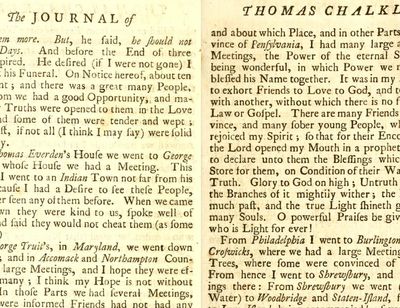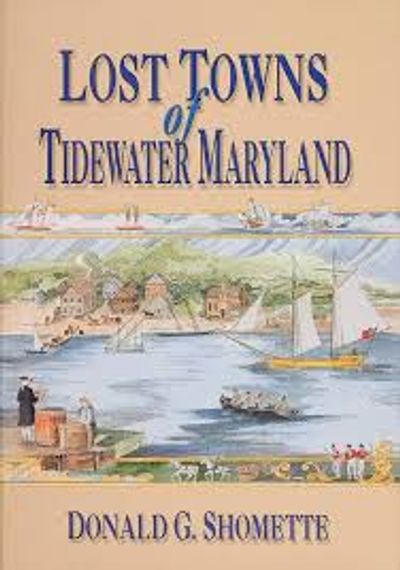Signed in as:
filler@godaddy.com
Signed in as:
filler@godaddy.com
On February 19th, 1634, "John Wattam, aged 24, Randall Revell, aged 21 years, and John Ford, aged 25 years or thereabouts, sworne and examined, saye they heard Henry Charlton saye, that if he had had Mr. Cotton (the minister) without the church yeard he would have kickt him over the pallyzados, calling of him black rotted raskoll. Upon the complaynt of Mr. Cotton agst the sayd Charlton, and the depositions above expressed, it is ordered that the syd Charl-ton shall for the syd offense buyld a pare of stockes and sett in them three sevral Saboth dayes in the tyme of Devyne serviss, and there ask Mr. Cotton forgiveness."

-Each Indian town (similar to English country villages) has its own distinct nation.
- Every town has a king, referred to as a Werowance.
- Neighboring towns, even those just 40-50 miles apart, differ significantly in language and disposition.
This passage emphasizes the complexity and diversity of Native American cultures in the region, contradicting the common misconception of a single, homogeneous "Indian" identity.


Your support is essential to our mission of preserving and sharing the history of American Indigenous Accawmacke Indians. By making a donation today, you can help us continue to collect, document, and exhibit artifacts and information that showcase the lives and stories of the people who have lived here over the centuries.

This woodcut depicts two native Virginians. The accompanying text provides a detailed description of the lifestyle, culture, and practices of the indigenous peoples of Virginia.
The image appeared in Happel's Thesaurus Exoticorum, published in Hamburg in 1688.
The following is a rough translation of the text:
"Virginia is also a wonderful land, rich in fruits, fish, animals, birds, and beautiful meadows. The inhabitants mostly live by rivers or streams and in low bushes, so they are sufficiently provided with drinking water and firewood. They ignite fire using a dry sharp piece of wood, which they forcefully spin in a square hole of another wood. Their homes, made from young branches and rods of trees as well as tightly woven mats and bast, smoke very heavily, even though there's a smoke hole in the middle of the roof. Nevertheless, they are quite strong and can endure against weather and wind for a long time. In their homes, they lay around the fire on heaps and reed tubes, covered with mats, sometimes up to twenty people.
Most of these houses stand in the middle of their courtyards, which are small pieces of land; often a hundred or more are located together, only separated from each other by narrow rows of trees. As soon as the children are born, the mothers wash or bathe them, even in the coldest winter times, in the rivers and smear them with a red color made from the root Pockone and tar, so they could get such hard skin, which can't be affected by heat, cold, or any other discomfort of the weather.
Both men and women have their particular tasks they perform, and no others, especially men who are so cautious that they would rather stay idle than to take on another job, which they believe does not suit them. Thus, the female population, along with children, takes care of the cows, provides for farming; breaks the corn into pieces or grinds it small; bakes bread, carries burdens, makes mats, baskets, pots, and mortars; Indeed, they do all the work related to the household. In return, the men go fishing, hunting, and to war. Their war gear consists of bows, arrows, wooden swords, clubs, and round shields."
This case along with many others proves that the Accawmacke along with other Virginia Indians were the architects of Law as we know it. for individuals to know how to self represent in court as early as 1628 proves we had bee accustomed to this system and many Engish accounts state they approved of our system. Yet you can see post Revolutionary war the European custom of using Barristers / Lawyers took the place of our Indigenous Self Representation.
The case Moore Vs Light 1673 also proves Negro Slaves did not come from Africa.
For no one would import a Negro from Africa and Free that Negro in 5 year then have that Negro sue the Master.
That Negro was definitely not an African Imported without knowing the language, the environment, the food or the work for only five years then set free! Plus Europeans would never grant inported chattel the right litigate against them!


"From Thomas Everden's house, we went to George Bruit's, where we held a meeting. This friend and I visited an Indian town near his house, as I was eager to meet these people, having never seen them before. When we arrived at the town, they were kind to us, spoke well of our Quaker community, and assured us they would not cheat us (as others had done).
This passage appears to be from a Quaker's travel journal, likely from the 17th or 18th century, given the language and spelling. The author describes visiting an Indian town near George Bruit's house, expressing a desire to see the American Indians, having never encountered them before. The author notes that the American Indians were kind, spoke well of the Quakers (referred to as "Friends"), and assured them that they would not cheat them, unlike others. This passage provides valuable insight into:
1. Early interactions between European colonizers (specifically Quakers) and American Indians.
2. The reputation of Quakers among American Indians.
3. The author's curiosity and openness to learning about American Indians cultures.
From George Truitt's in Maryland, we traveled to Virginia and held large meetings in Accomack and Northampton Counties. I hope these meetings were effective and beneficial to many; I believe my hope is not unfounded. In these areas, we had several meetings where we were told that Quakers had not previously gathered. I am grateful to the Lord for the opportunities we had to connect with the people. The goodness of God, through Christ our Lord, was evident, and many acknowledged the truth with tears.
Based on the passage, the Indian town is mentioned as being "not far" from George Bruit's house. Since the author later mentions traveling to Accomack and Northampton Counties in Virginia, it's likely that George Bruit's house and the Indian town were located in Maryland, near the border with Virginia.
Given the historical context and the mention of Accomack and Northampton Counties, it's possible that the Indian town was located in the vicinity of the Eastern Shore of Maryland or Virginia. Some potential locations could include:
- The Pocomoke River area in Maryland
- The Nanticoke River area in Maryland
- The Eastern Shore of Virginia, particularly in the areas around Accomack and Northampton Counties
Keep in mind that this is a rough estimate based on the available information, and further research would be needed to pinpoint the exact location of the Indian town.
This passage discusses Abel Parker Upshur, a General Court Judge in Virginia, and his strong support for colonization, specifically the removal of free black people from Northampton County.
Key points:
1. Upshur believed the free black population was inherently dangerous and needed to be removed quickly.
2. In 1831, he rallied support from local citizens to finance the deportation of free black people, receiving pledges of $15,000 from 19 individuals.
3. Later that year, citizens of Northampton County petitioned the legislature to approve their plan to deport the free black population.
The petitioners' argument, as quoted, reveals a deeply troubling and racist perspective:
"...deprived of many civil privileges, which our government generously confers on others... it would be moderately absurd to expect from them any attachment to our laws and institutions, or any sympathy with our people."
This passage highlights the pervasive racial prejudices and discriminatory attitudes that underpinned the colonization movement and the treatment of free black people in antebellum Virginia.


" Capital of the colony at St. Mary’s City, established soon after the arrival of the Ark and Dove in 1634, appears to have followed existing Indian paths and trails, at least until 1672, when the first formal street was laid down. A third town site, this one on the Port Tobacco River, most likely located at or near Chandler’s Hope and the Indian village of Potobaco, already possessed a church and a rudimentary settlement but no formal plan."
1. St. Mary's City: The capital of the colony, established around 1634, initially followed existing Indian paths and trails. The first formal street was laid out in 1672.
2. Port Tobacco River town site: Located near Chandler's Hope and the Indian village of Potobaco, this site already had a church and a basic settlement but lacked a formal plan.
Key points:
- Early colonial towns often developed along existing Native American paths and trails.
- The presence of Indian villages, such as Potobaco, influenced the location and development of colonial towns.
This passage highlights the complex relationships between European colonizers and Native American communities in the Chesapeake region during the 17th century.
1. Augustine Herrman's map, "Virginia and Maryland" (1673)
2. John Ogilby's book, "America: Being the Latest, and Most Accurate Description of the New World" (1671)
3. The 1668, 1669, and 1671 ordinances and declarations from the colonial government of Maryland
01/25
We use cookies to analyze website traffic and optimize your website experience. By accepting our use of cookies, your data will be aggregated with all other user data.